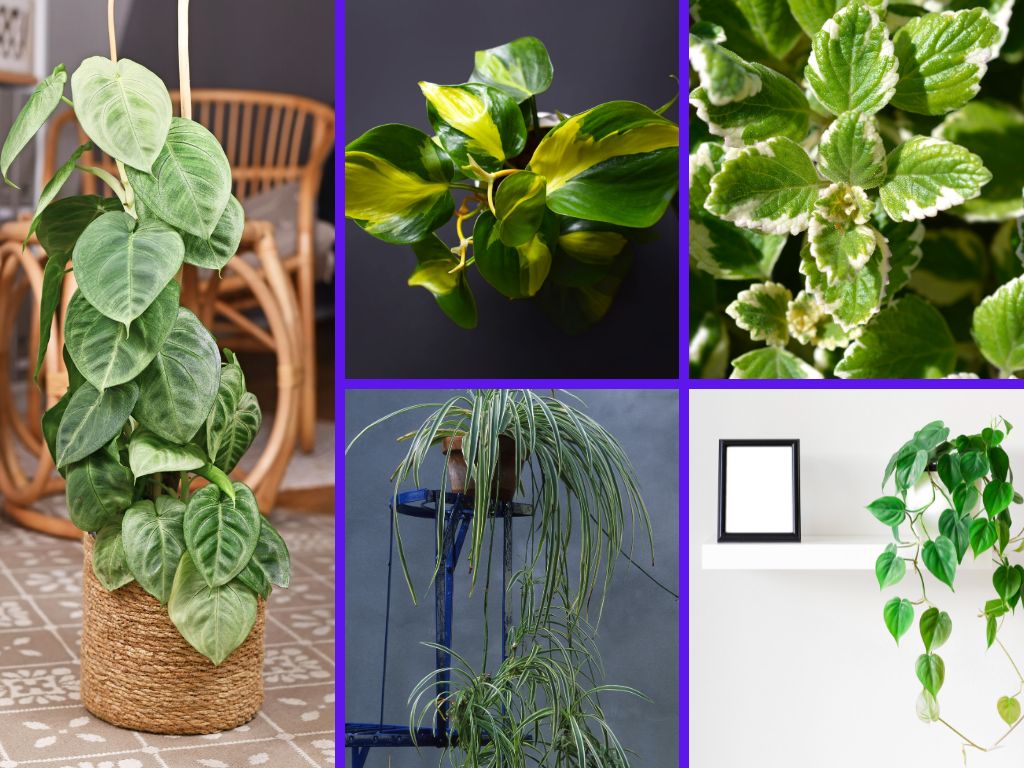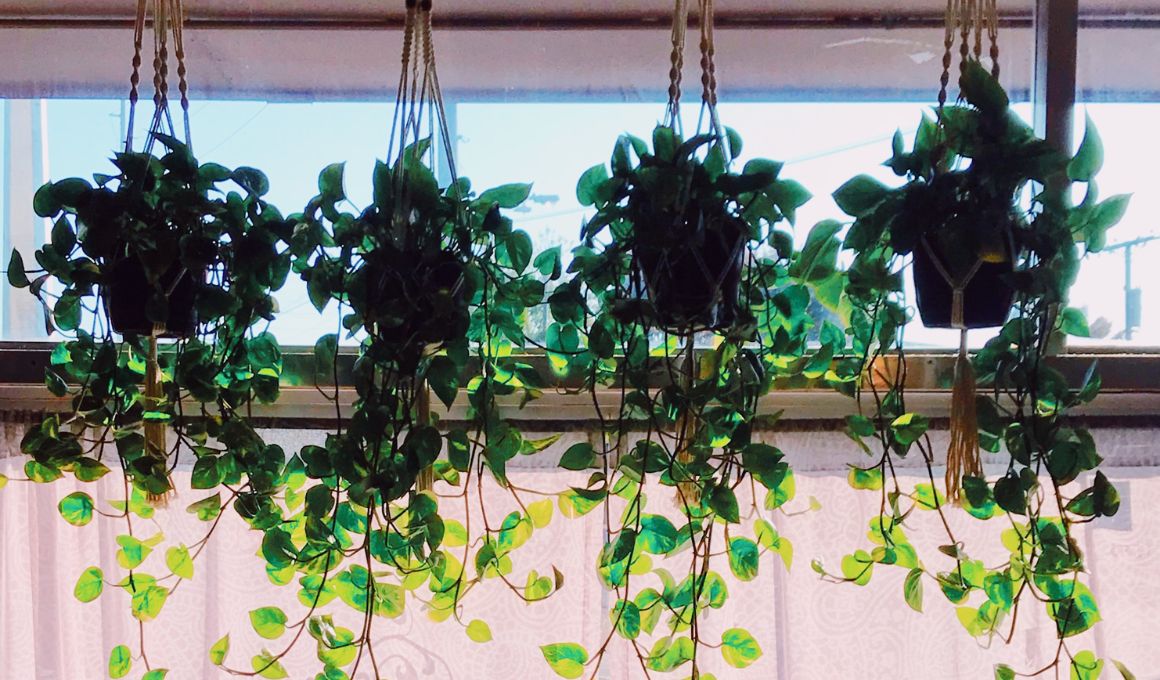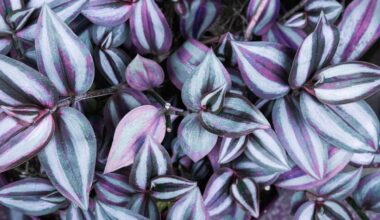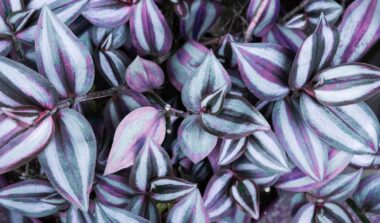Indoor vine plants are a delightful addition to any home or office space. Not only do they bring a touch of nature indoors, but they also provide numerous benefits, such as improved air quality and a calming ambiance. If you’re considering adding some greenery to your indoor space, indoor vine plants are a fantastic choice.
In this comprehensive guide, we will explore everything you need to know about indoor vine plants, from identification and growth requirements to care tips and popular plant varieties.
So, let’s dive in and discover the wonderful world of indoor vine plants!
What are Indoor Vine Plants?

Indoor vine plants, also known as climbing or trailing plants, are a diverse group of plants that possess long, flexible stems or tendrils. These plants have a natural inclination to climb or trail, making them perfect for adding vertical interest and a touch of elegance to your indoor space.
With their lush foliage and cascading growth habit, indoor vine plants create a visually stunning display, transforming any room into a lush oasis.
Indoor Vine Plant Identification
Identifying indoor vine plants can be an exciting endeavor, as there are numerous species and cultivars to choose from. Here are some common indoor vine plants that you may encounter:
- Pothos (Epipremnum aureum): With heart-shaped leaves and a vigorous growth habit, pothos is one of the most popular indoor vine plants. It thrives in a wide range of light conditions and is incredibly easy to care for, making it an ideal choice for beginners.
- Devil’s Ivy (Epipremnum pinnatum): Also known as golden pothos, devil’s ivy features variegated leaves with striking patterns of green and yellow. It’s a hardy plant that can tolerate low light conditions, making it perfect for dimly lit corners.
- English Ivy (Hedera helix): Known for its iconic lobed leaves, English ivy is a classic choice for indoor vine plants. It can adapt to various light conditions and is particularly prized for its ability to purify the air.
Where Do Indoor Vine Plants Grow?
Indoor vine plants originate from various regions worldwide, including tropical rainforests, subtropical areas, and even temperate regions. Their natural habitats provide insights into the ideal growing conditions for these plants.
In general, indoor vine plants thrive in moderate to bright indirect light. Placing them near a north or east-facing window is usually ideal, as it provides them with the right amount of light without subjecting them to direct sunlight, which can scorch their delicate foliage.
In terms of temperature, most indoor vine plants prefer a range between 60°F (15°C) and 80°F (27°C). They can tolerate slightly cooler temperatures but may suffer damage if exposed to extreme cold. It’s important to avoid placing them near drafts or air conditioning vents, as sudden temperature fluctuations can stress the plants.
Indoor Vine Plant Ideas
When it comes to incorporating indoor vine plants into your space, the possibilities are endless. Here are some creative ideas to inspire you:
- Hanging Baskets: Suspend your indoor vine plants in stylish hanging baskets to create an eye-catching display. This not only adds visual interest but also allows the plants to cascade gracefully, filling the vertical space.
- Wall Climbers: Train your indoor vine plants to climb up a trellis or a wall-mounted structure. This adds a touch of natural elegance to any room and can be especially striking when paired with neutral-colored walls or exposed brick.
- Shelf Decor: Place small potted indoor vine plants on shelves or bookcases to infuse greenery at various levels. This creates a sense of depth and dimension, transforming your shelves into living works of art.
Related Reading:
- Fertilizer for Indoor Plants: Nourishing Your Green Haven
- A Comprehensive Guide to the Different Types of Evergreen Trees
- Discovering the Majesty of Tropical Plants: A Guide to Growing Tropical Plants and Care
- How to Get Started with Gardening?
- Snake Plant – A Growing, Types, Benefits Guide
How to Grow Indoor Vine Plants?

Growing indoor vine plants can be an incredibly rewarding experience. With the right care and attention, you can enjoy lush foliage and impressive growth. Here are some essential tips to help you successfully grow indoor vine plants:
Step 1: Choose the Right Vine Plant
- Research different vine plant species and select the one that suits your preferences and indoor conditions. Consider factors like lighting requirements, growth habit, and care needs.
Step 2: Prepare the Potting Mix
- Use a well-draining potting mix that provides adequate moisture retention. A mixture of peat moss, perlite, and compost works well for most vine plants.
Step 3: Select an Appropriate Container
- Choose a container that has drainage holes to prevent waterlogging. Ensure it is large enough to accommodate the vine plant’s growth and has room for trailing or climbing.
Step 4: Planting the Vine Plant
- Gently remove the vine plant from its nursery container and loosen the root ball. Place it in the prepared potting mix, ensuring the plant is at the same depth as in the previous container. Fill the remaining space with the potting mix, pressing it lightly around the roots.
Step 5: Provide Adequate Light
- Place the potted vine plant in an area that receives bright, indirect light. Most indoor vine plants thrive in medium to bright light conditions. Avoid direct sunlight, as it can damage the leaves.
Step 6: Watering Routine
- Water the vine plant thoroughly, allowing the excess water to drain out. Check the moisture level of the soil regularly and water when the top inch feels dry. Avoid overwatering, as it can lead to root rot.
Step 7: Maintain Proper Humidity
- Most vine plants prefer higher humidity levels. You can increase humidity by misting the leaves with water or placing a tray filled with water near the plant. Alternatively, use a humidifier to create a suitable environment.
Step 8: Support and Training
- As the vine plant grows, provide support such as trellises, stakes, or moss poles for climbing varieties. Gently guide the vines or tendrils towards the support structure to encourage upward growth.
Step 9: Pruning and Trimming
- Regularly prune your indoor vine plant to remove any dead or yellowing leaves, promote bushier growth, and manage its size. Pruning also helps shape the plant and maintain its health.
Step 10: Fertilization
- Feed your indoor vine plant with a balanced houseplant fertilizer during the growing season. Follow the instructions on the fertilizer packaging for the correct dosage and frequency.
Step 11: Monitor and Troubleshoot
- Keep an eye out for pests like spider mites or mealybugs. If detected, treat them promptly with appropriate insecticides or natural remedies. Also, monitor the plant for any signs of stress, such as wilting or discoloration, and take necessary action.
By following these steps and providing the right care, you can successfully grow and enjoy the beauty of indoor vine plants in your home. Remember to tailor your care routine based on the specific needs of the vine plant species you have chosen. Happy growing!
18 Vining Plants Types You Can Grow Indoors

When it comes to indoor vine plants, the variety is truly remarkable. Here are 18 popular vining plant types that you can successfully grow indoors:
- Heartleaf Philodendron (Philodendron hederaceum): This trailing plant features heart-shaped leaves and is known for its easy care requirements.
- String of Pearls (Senecio rowleyanus): This unique succulent vine has round, bead-like leaves that cascade down, resembling a string of pearls.
- Spider Plant (Chlorophytum comosum): With arching leaves adorned with white stripes, spider plants are excellent air purifiers and easy to propagate.
- Hoya (Hoya spp.): Hoya plants, also known as wax plants, produce beautiful clusters of star-shaped flowers and have fleshy, waxy leaves.
- Philodendron Brasil (Philodendron hederaceum ‘Brasil’): This variegated variety of Philodendron features stunning green and yellow leaves, adding a pop of color to any space.
- Swedish Ivy (Plectranthus spp.): Swedish Ivy is a fast-growing trailing plant with aromatic leaves and delicate lavender flowers.
- Golden Devil’s Ivy (Epipremnum aureum ‘Marble Queen’): This cultivar of Devil’s Ivy boasts marbled green and white leaves, creating an elegant display.
- String of Hearts (Ceropegia woodii): This charming succulent vine has small, heart-shaped leaves that trail delicately, making it a favorite among plant enthusiasts.
- English Ivy (Hedera helix ‘Golden Ingot’): With its golden variegation, this cultivar of English Ivy adds a touch of glamour to any indoor space.
- Nephthytis (Syngonium podophyllum): Also known as Arrowhead Vine, Nephthytis features arrow-shaped leaves and is available in various vibrant colors.
- Devil’s Backbone (Pedilanthus tithymaloides): This unique plant has zigzag-shaped stems and adds a quirky touch to your indoor collection.
- Silver Pothos (Scindapsus pictus): With its silver-speckled leaves, Silver Pothos is a stunning addition to any room, creating a cool, contemporary vibe.
- Purple Wandering Jew (Tradescantia pallida): This trailing plant has vibrant purple leaves that create a striking contrast in any space.
- Golden Pothos (Epipremnum aureum ‘Golden Pothos’): This classic indoor vine plant features heart-shaped leaves with golden variegation, adding warmth and brightness.
- Arrowhead Vine (Syngonium podophyllum ‘White Butterfly’): With its delicate white and green leaves, this cultivar of Arrowhead Vine brings a touch of elegance.
- Chinese Money Plant (Pilea peperomioides): This popular plant has round, pancake-shaped leaves and is believed to bring good luck and wealth.
- Passionflower (Passiflora spp.): Passionflower vines produce exquisite, intricate flowers and can be grown as indoor specimens with proper care.
- Grape Ivy (Cissus rhombifolia): This vigorous vine has attractive, glossy leaves that resemble grapevine leaves, adding a touch of sophistication.
Remember to research each plant’s specific care requirements to ensure optimal growth and health.
How to Care for Indoor Vine Plants?
Caring for indoor vine plants involves providing them with the right conditions and meeting their specific needs. Here are some general care tips to keep in mind:
Watering
Indoor vine plants generally prefer slightly moist soil. Check the top inch of soil and water when it feels dry. Ensure proper drainage to prevent waterlogging, which can lead to root rot
Light Requirements
Most indoor vine plants thrive in bright, indirect light. Place them near a window with filtered sunlight or provide supplemental artificial light if needed. Avoid exposing them to direct sunlight, as it can scorch their leaves.
Temperature and Humidity
Maintain a temperature range of 60°F (15°C) to 80°F (27°C) for your indoor vine plants. They prefer higher humidity levels, so consider misting them regularly or using a humidifier to create a favorable environment.
Fertilization
Feed your indoor vine plants with a balanced houseplant fertilizer during the growing season. Follow the instructions on the fertilizer package for the appropriate dosage and frequency.
Pruning and Training
Regularly prune your indoor vine plants to remove any dead or yellowing leaves and promote bushier growth. You can also train them to climb or trail by gently attaching them to support structures.
With proper care and attention, your indoor vine plants will thrive and bring beauty to your space for years to come.
Related Reading:
- Japanese Cucumber Info: How to Grow Japanese Cucumber From Seed?
- The Ultimate Guide to Growing Pumpkins in Grow Bags: Tips, Techniques, and Best Practices
- Can We Grow Zucchini And Eggplant Together?
- The Ultimate Guide To Growing Carrots In Your Garden
- Comprehensive Guide On Growing Eggplant In A Pot
- How to Grow Tomatoes – The step-by-step Guide from Seeds to Harvest
Conclusion
Indoor vine plants bring a touch of natural beauty and elegance to any indoor space. With their trailing or climbing growth habits, lush foliage, and various colors and patterns, they create visually stunning displays and transform rooms into vibrant oases.
By understanding their care requirements, identifying popular varieties, and exploring creative ways to incorporate them into your space, you can enjoy the beauty and benefits of indoor vine plants.
So, go ahead and bring the wonders of nature indoors with these delightful plants!
FAQs
Here are some FAQs about vining plant indoor.
Is indoor vine plants poisonous?
Some indoor vine plants can be toxic to humans and pets if ingested. It’s essential to research the specific plant species you have and take the necessary precautions. Keep them out of reach of children and pets, and if you suspect ingestion, seek medical attention immediately.
Is indoor vine plants edible?
While some indoor vine plants, like certain varieties of Pothos and English Ivy, are not safe for consumption, there are edible vine plants you can grow indoors, such as certain types of Grape Ivy and Passionflower. Always ensure you are growing the appropriate plant variety for consumption and follow proper cultivation and harvesting practices.
Are indoor vine plants safe for cats?
Not all indoor vine plants are safe for cats. Some varieties, such as Devil’s Ivy and Philodendron, can be poisonous to cats if consumed. It’s crucial to research the specific plants and take measures to keep your cats away from any potentially harmful foliage.
How fast do indoor vine plants grow?
The growth rate of indoor vine plants can vary depending on the species, growing conditions, and care provided. Some vine plants, like Pothos and Devil’s Ivy, are known for their fast growth and can quickly fill a space with their cascading vines. Others may have slower growth rates. Regular pruning and proper care can help manage the growth and keep your plants healthy.
Can indoor vine plants be propagated?
Yes, many indoor vine plants can be propagated through various methods, such as stem cuttings, division, or layering. Propagation allows you to create new plants from your existing ones and expand your indoor vine plant collection. Research the specific propagation techniques for your plant species to ensure successful propagation.





